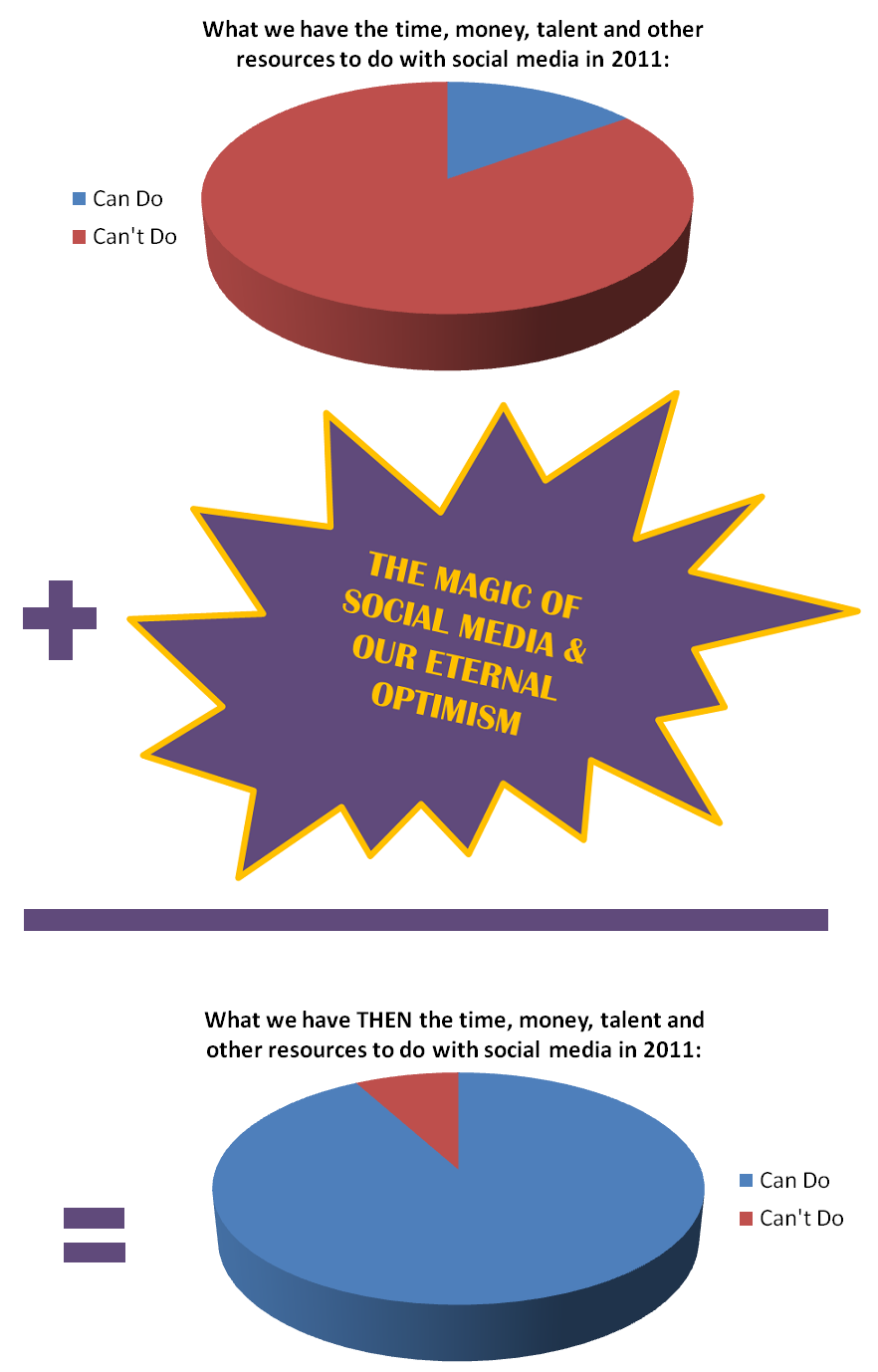Per the post:
----------------------------------------------
"Most businesses and organizations aren’t ready to commit to quite (the extent Ben & Jerry's did by only advertising via social media), but make no mistake, you should not be without a presence on these powerful (social media) sites. Why?
#1: It’s free. Free advertising and promotion! Never, ever turn down free advertising.
#2: The reach is huge: Facebook alone has more than 500 million users, 50% of whom are “active users” who log on every day. Twitter signs up about 300,000 new users every day, according to an article in the Huffington Post.
#3: The number of people who may see your marketing is limitless (“viral marketing”).
#4: Allows your organization to benefit from person-to-person fundraising.
#5: It’s fast and requires little monitoring."
----------------------------------------------
Let's break these down, one-by-one.
#1: It's free.
No. It's not. If you are going to do social media management and fundraising properly and have any success, it's going to take time & money. This commitment of resources also represents the opportunity cost of not dedicating the resources to other priorities, like face-to-case fundraising, events, etc.
Bonus #1a: "Never turn down free advertising." - Basic marketing should tell you that this is not always the case. Free advertising may not be in a location/channel that aligns with your organization's values. Free advertising must align with the audience you are targeting, your messaging strategy, etc.
#2: The reach is huge.
I find this quite misleading. The potential reach is huge... the reach is only as good as your messaging and your network.
#3: The number of people who may see your marketing is limitless (“viral marketing”).
Ugh. Anyone who tells you that you can plan viral marketing has never tried to do so. A microscopic percentage of postings go viral and those that do generally aren't things you would want to associate with your nonprofit. Here are two of the most popular viral videos of all time... not exactly nonprofit material:
Numa Numa:
#2: The reach is huge.
I find this quite misleading. The potential reach is huge... the reach is only as good as your messaging and your network.
#3: The number of people who may see your marketing is limitless (“viral marketing”).
Ugh. Anyone who tells you that you can plan viral marketing has never tried to do so. A microscopic percentage of postings go viral and those that do generally aren't things you would want to associate with your nonprofit. Here are two of the most popular viral videos of all time... not exactly nonprofit material:
Numa Numa:
Leave Britney Alone!
#4: Allows your organization to benefit from person-to-person fundraising.
Sure... to an extent. But there's a lot of legwork required to make this happen - a support network in your organization, a successful communication strategy that makes the case for support, people willing to champion your cause and ask for gifts, software/data integration to manage the volunteer gift program, etc.
#5: It’s fast and requires little monitoring.

Social media fundraising is far from "set it and forget it," like the good ol' Showtime Compact Rotisserie & BBQ Oven.
If you want to raise money with social media, it is going to require a time commitment and monitoring, so as to develop the conversation and listen to your constituents.
I certainly do not like punching holes in another's blog post, but this one demanded it - there are simply too many myths being perpetuated.
Sure... to an extent. But there's a lot of legwork required to make this happen - a support network in your organization, a successful communication strategy that makes the case for support, people willing to champion your cause and ask for gifts, software/data integration to manage the volunteer gift program, etc.
#5: It’s fast and requires little monitoring.

Social media fundraising is far from "set it and forget it," like the good ol' Showtime Compact Rotisserie & BBQ Oven.
If you want to raise money with social media, it is going to require a time commitment and monitoring, so as to develop the conversation and listen to your constituents.
I certainly do not like punching holes in another's blog post, but this one demanded it - there are simply too many myths being perpetuated.



















